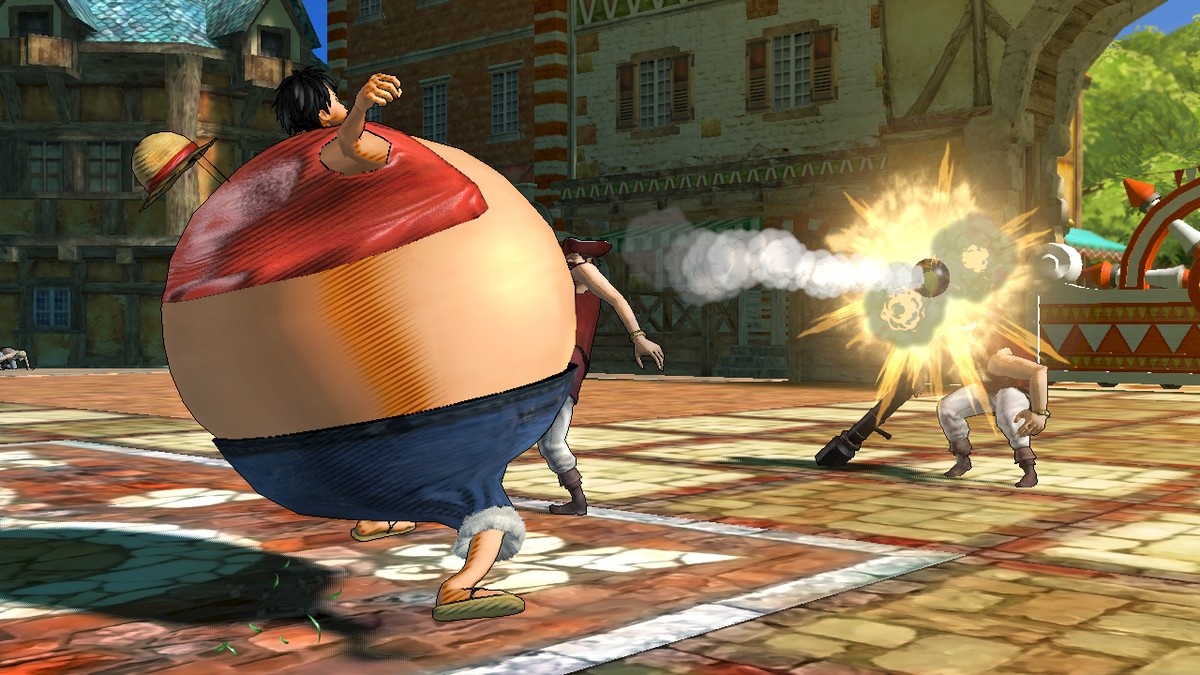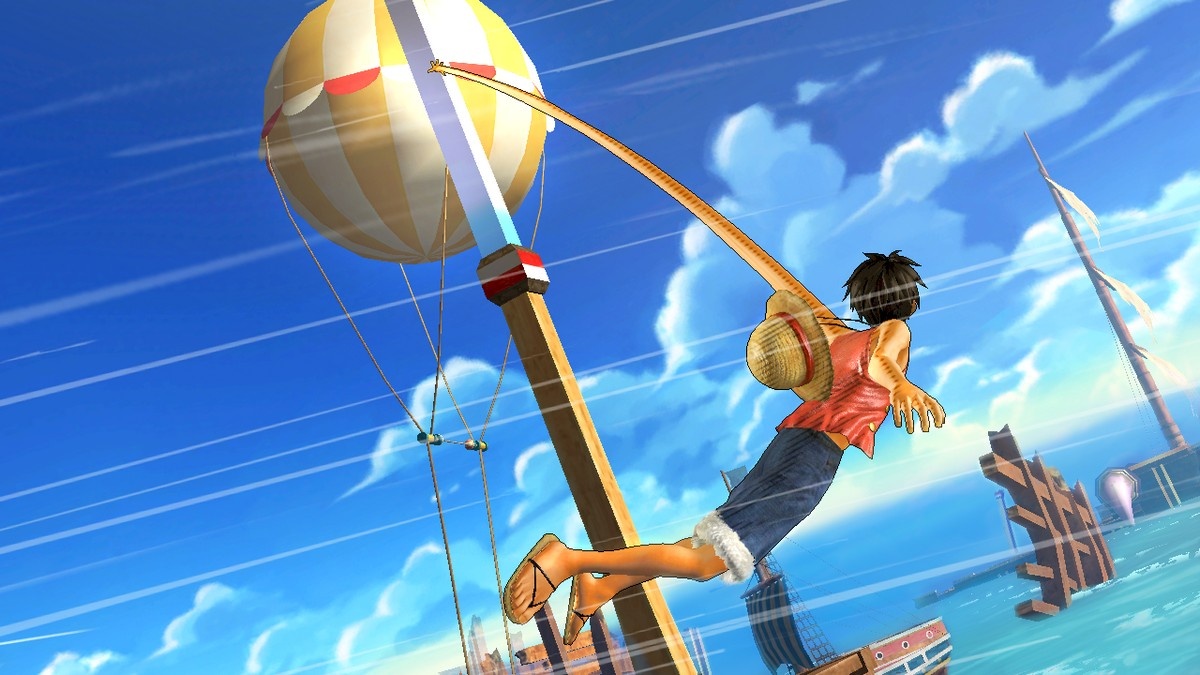Monkey D. Luffy and his crew of Straw Hat Pirates have used their zany personalities and unusual powers to sail to manga domination. But the inventiveness that has helped One Piece stand out from its manga and anime brethren is barely evident in One Piece: Pirate Warriors. This shallow game spends most of its time doing a fair imitation of the tired combat of Dynasty Warriors games, occasionally changing things up with rote puzzles and with grappling sequences that you don't have much control over. Wacky animations lend Pirate Warriors a bit of superficial personality, but underneath the surface, this is a dull knockoff of an uninspired series.
Main Log mode recounts the adventures of the Straw Hat Pirates across the One Piece storyline. It doesn't capture much of the excitement of that storyline, though. The plot is largely advanced through scenes in which characters talk about their adventures while a static image of them enjoying a picnic is displayed. The Japanese-language voices are overflowing with energy, but the accompanying, unmoving visuals make the story fall flat. If you come to Pirate Warriors not already knowing the tale of Luffy's adventures, the storytelling here certainly won't reveal what all the fuss is about.
And the gameplay doesn't make up for the excitement that's missing from the story. You spend most of your time playing as Luffy, running around battlefields to complete objectives. You're frequently swarmed by enemies, but these foes pose no challenge whatsoever. They exist simply to be clobbered by you. So you push some buttons, pull off some wild-looking attacks, and defeat them by the dozens. Different button combinations make Luffy use his rubbery limbs in different ways. He can charge forward in a flurry of fists, swing his legs around like a whip, or slingshot himself forward into enemy crowds. And by holding a button down, you can make him charge up certain attacks. But most enemies demand so little from you that there's little incentive to use one attack over another. And the constant barrage of powerful-looking attacks with elaborate animations that Luffy deals out quickly dilutes their visual impact down to nothing.
From time to time, more powerful enemies appear who require a bit more effort to defeat. You might need to evade some of their techniques, and rely on your own devastating special attacks to defeat them. These special attacks have even more elaborate animations, but they take no skill to perform. As long as your special attack meter has charges in it, you just hold down a button, and the attack takes care of itself. Watching Luffy's bizarre, stretchy attacks is fun for a short while, but they don't disguise how dull the underlying mechanics are.

Frustratingly, challenge sometimes comes not from combat or other things you have direct control over, but from failure conditions that require you to keep other members of your crew in fighting shape. It's difficult to simultaneously protect allies who are in one spot and run all over the place completing mission objectives that are scattered across the map, and when clueless allies get themselves pummeled in your absence, you'll wish you could just issue commands telling them to keep themselves out of trouble.
Main Log mode occasionally puts you in control of some of these allies, and their special attacks differ significantly from Luffy's. Nico Robin can create arms that rise up out of the ground and pummel enemies, for instance, and Nami can summon lightning bolts and whirlwinds to aid her in battle. But this diversity of abilities doesn't bring a feeling of variety to the gameplay. Mashing buttons is still enough to deal with onslaughts of enemies, and even bosses don't require you to change up your approach.
When you're not fighting, you're often grappling and swinging around levels, using Luffy's rubbery limbs to reach areas that no ordinary pirate could. However, all this movement is anything but a pleasant change of pace from combat. You don't directly control Luffy as he does all of this fun-looking stuff, swinging through the air or grabbing onto a soaring cannonball that carries him over the water. Rather, you just respond to displayed button prompts and watch Luffy do all the rest. This makes you feel alienated from the action, and has you longing for the relative immediacy of battle. Other variations from the core combat also fail to inject any life into the game. Dull puzzles have you doing things like rotating statues, and one stage slows you down by making you carry an injured Nami around and find places to set her down before you can jump into the thick of it.

As you progress through Main Log, you unlock more characters you can use in Another Log mode, which puts the focus on characters other than Luffy. And online support lets you join forces with another player to complete chapters. But no matter how you play it, One Piece: Pirate Warriors is a tedious game; the energy of its characters and animations contrasts sharply with the tiresome gameplay. This 50-dollar, 11-gigabyte game isn't worth the cost or the significant amount of time it takes to download. If you're looking to spend some quality time with Luffy and his pirate crew, you're better off sticking to the pages of a manga or the scenes of an anime.